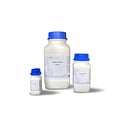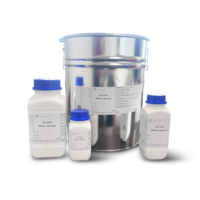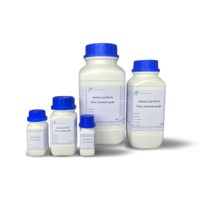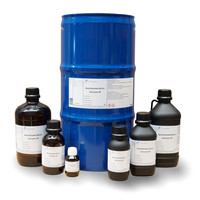You have no items in your shopping cart
Salicylic Acid 99 +% Ph. Eur.
- Buy 2 and save 5%
- Buy 6 and save 10%
Salicylic acid or 2-hydroxybenzoic acid is an aromatic organic compound, one of the three isomers of hydroxybenzoic acid, consisting of a benzene ring substituted by a carboxyl group (benzoic acid) and a hydroxyl group (phenol) in ortho position. It is a colorless crystalline solid naturally occurring in certain plants, including willow (from which it gets its name), used as a medicine and precursor to acetylsalicylic acid, aspirin.
Properties
When taken in large quantities it is a poisonous product, but in smaller quantities it is used as a preservative and antiseptic.
The medical properties of salicylic acid have long been known, mainly because of its action against fever. It was mainly extracted from willow, salix in Latin from which it takes its name. In the fight against fever, it is now being replaced by other more effective drugs such as aspirin (a derivative of it) or paracetamol.
It is no longer used for its soothing (analgesic) effect and is found in many dermatological products alongside another active ingredient. For example, it is used in the treatment of acne, warts or hyperhidrosis.
Involvement in acquired systemic resistance
The accumulation of salicylic acid, produced upon pathogen recognition, is necessary for the activation of acquired systemic resistance. Therefore, salicylic acid biosynthesis will increase when the plant recognizes a viral or non-viral pathogen. This accumulation will stimulate resistance to viral replication and its intracellular spread. With this resistance, the infection is less likely to become systemic. However, some viruses (eg Tobacco Mosaic Virus) will stimulate salicylic acid biosynthesis in the host. This phenomenon suggests that salicylic acid will moderate viral replication and therefore prevent necrosis and other exacerbated symptoms in the plant. Via necrosis, the virus particles in the necrotic tissue are inactivated and the virus cannot spread in the plant. In other words, the virus promotes salicylic acid synthesis to slow down its replication. By slowing down replication, the plant's symptoms will be moderate and the virus will be able to spread and replicate better.
-Technical data
Empirical formula C7H6O3
Molar mass (M) 138.12 g / mol
Density (D) 1.44
Boiling point (bp) 336 ° C
Flash point (flp) 157 ° C • Melting point (mp) 158-161 ° C
Solubility approx. 2 g / l (H2O, 20 ° C)
WGK 1
CAS No. [69-72-7]
EC no. 200-712-3
Downloads
$$$$$
Hazard statements
H302 Harmful if swallowed
H318 Causes serious eye damage
H361d Suspected of damaging the unborn child
Precautions - prevention
P270 Do not eat, drink or smoke when using this product.
P280 Wear protective gloves / eye protection.
Precautions - response
P305 + P351 + P338 IF IN EYES: Rinse cautiously with water for a long period of time
amount of minutes; remove contact lenses, if possible; keep rinsing.
P310 Immediately call a POISON CENTER / doctor.









